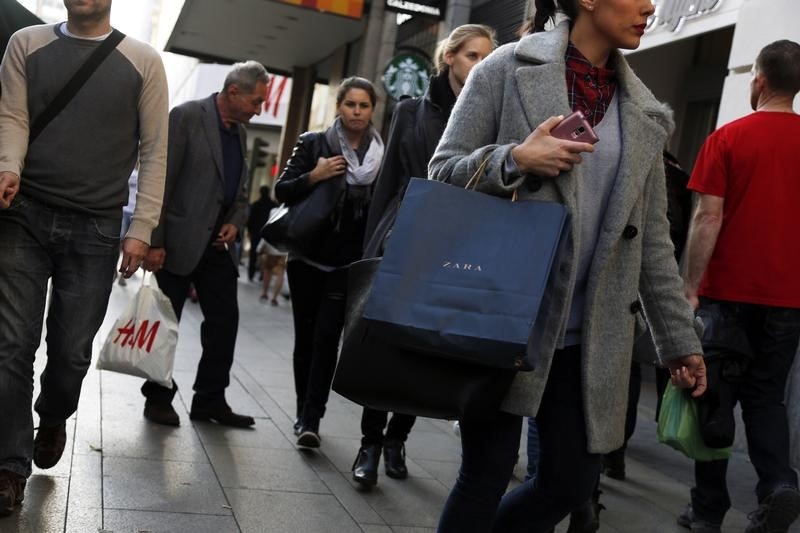BRUSSELS (Reuters) - Euro zone sales increased by more than expected in February as shoppers bought far more clothing than in January in a sign that consumers are still spending despite higher inflation.
Retail sales in the 19 countries sharing the euro increased by 0.7 percent in February from January, the European Union's statistics office Eurostat said on Tuesday, more than the average market expectation of a 0.5 percent rise.
Year-on-year, the volume of retail sales grew 1.8 percent in January, higher than the 1.4 percent rise forecast by economists polled by Reuters.
Eurostat also revised its figures for January, the month-on-month figure turning to a positive 0.1 percent from -0.1 percent and to 1.5 percent for the year-on-year figure, from a previous 1.2 percent.
The figures, which are often subject to revision, may indicate an increased appetite for shopping in the euro zone, which had appeared to be dented by higher consumer prices, although euro zone inflation dipped to 1.5 percent in March from 2.0 percent in February.
The increase in the retail sales in the month was mostly due to a 0.9 percent rise in purchases of non-food products, a wide category that includes clothing, electrical goods, pharmaceutical products and e-commerce.
Sales of textiles, clothes and footwear were up 2.2 percent, while those of electronics and furniture sales declined by 0.3 percent.
Sales of food, drinks and tobacco also gained 0.7 percent. Car fuel sales declined by 0.9 percent in the month.
Monthly sales rose by most in Portugal, up 3.1 percent. Of the larger nations, Germany was the stand-out, with a 1.8 percent increase.
